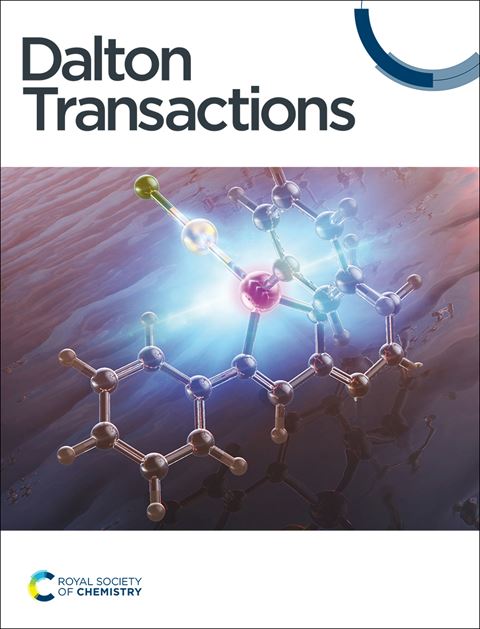Changing the properties of monodentate and P,C-chelating ferrocenyl-substituted 1,2,3-triazol-5-ylidene ligands through an inserted carbonyl moiety
IF 3.5
3区 化学
Q2 CHEMISTRY, INORGANIC & NUCLEAR
引用次数: 0
Abstract
Triazolylidenes derived from readily accessible triazoles are useful ligands for coordination chemistry and catalysis. This work describes the synthesis of Group 11 metal complexes of new ferrocenyl-substituted triazolylidene ligands in which the ferrocene and triazolylidene moieties are separated by a carbonyl linker. In particular, complexes of types [MCl(FcC(O){CCN(Mes)NN(Me)}-κC5)] (M = Cu or Au; Fc = ferrocenyl) and [M(FcC(O){CCN(Mes)NN(Me)}-κC5)2][BF4] (M = Cu, Ag, or Au) were prepared from FcC(O)CCH and characterised by spectroscopic methods, X-ray diffraction analysis and cyclic voltammetry. Using a similar strategy, the Pd(II) complex trans-[PdCl2(Ph2PfcC(O){CCN(Mes)NN(Me)}-κ2P,C5)] (fc = ferrocene-1,1'-diyl) was synthesised and analogously characterised. The phosphinocarbene ligand in this compound coordinates as a trans P,C-chelating ligand, unlike its analogues that lack the C=O spacer and similar compounds that combine the phosphine and carbene donor groups on the ferrocene scaffold. The influence of the carbonyl spacer was evaluated in a pair of Pd(II) bis-carbene complexes, [PdBr2({C(Fc)CN(Mes)NN(Me)}-κC5)(iPr2-bimy)] and [PdBr2(FcC(O){CCN(Mes)NN(Me)}-κC5)(iPr2-bimy)] (iPr2-bimy = 1,3-diisopropyl-1,3-dihydro-2H-benzimidazol-2-ylidene), by Huynh’s electronic parameters and the FeII/FeIII redox potential from cyclic voltammetry, which suggested an electron density decrease at the ferrocenyl group and decreased σ donor ability of the triazolylidene moiety upon introduction of the C=O linker. The Group 11 metal complexes were tested as catalysts for the metal-catalysed cyclisation of N-propargylbenzamide into 2-phenyl-5-methylene-4,5-dihydrooxazole. Among them, the chlorogold complex activated with a silver salt achieved the best results.求助全文
约1分钟内获得全文
求助全文
来源期刊

Dalton Transactions
化学-无机化学与核化学
CiteScore
6.60
自引率
7.50%
发文量
1832
审稿时长
1.5 months
期刊介绍:
Dalton Transactions is a journal for all areas of inorganic chemistry, which encompasses the organometallic, bioinorganic and materials chemistry of the elements, with applications including synthesis, catalysis, energy conversion/storage, electrical devices and medicine. Dalton Transactions welcomes high-quality, original submissions in all of these areas and more, where the advancement of knowledge in inorganic chemistry is significant.
 求助内容:
求助内容: 应助结果提醒方式:
应助结果提醒方式:


